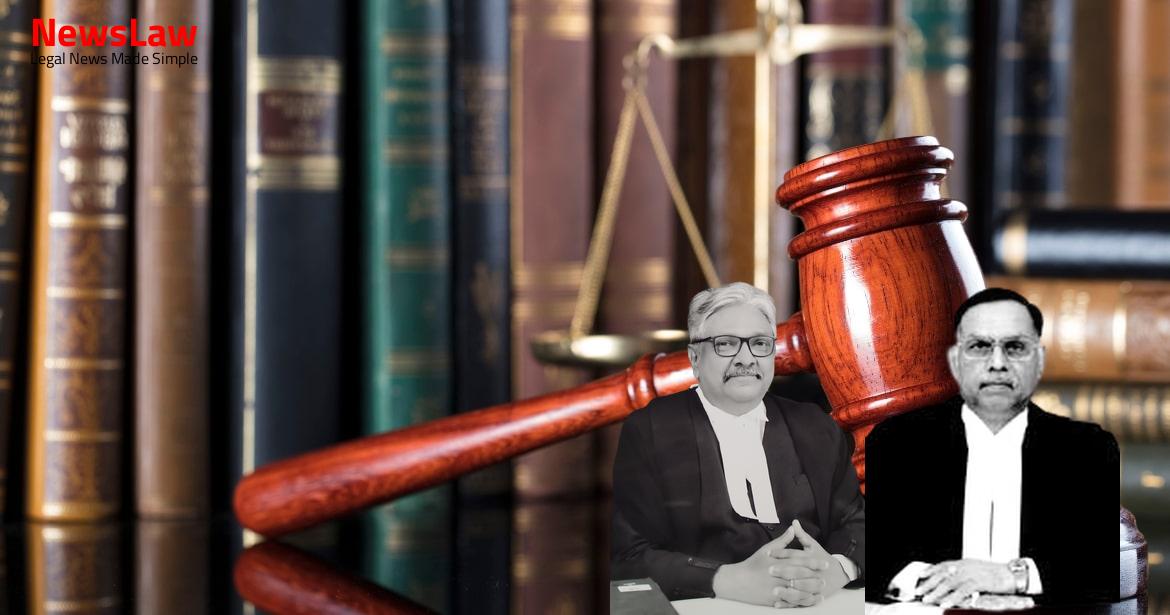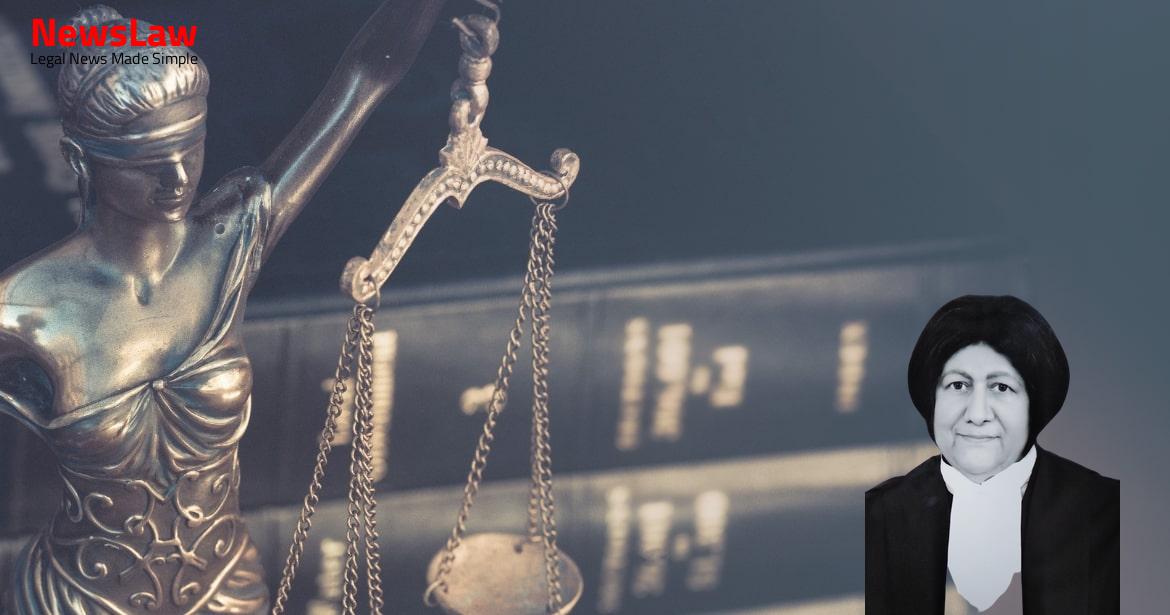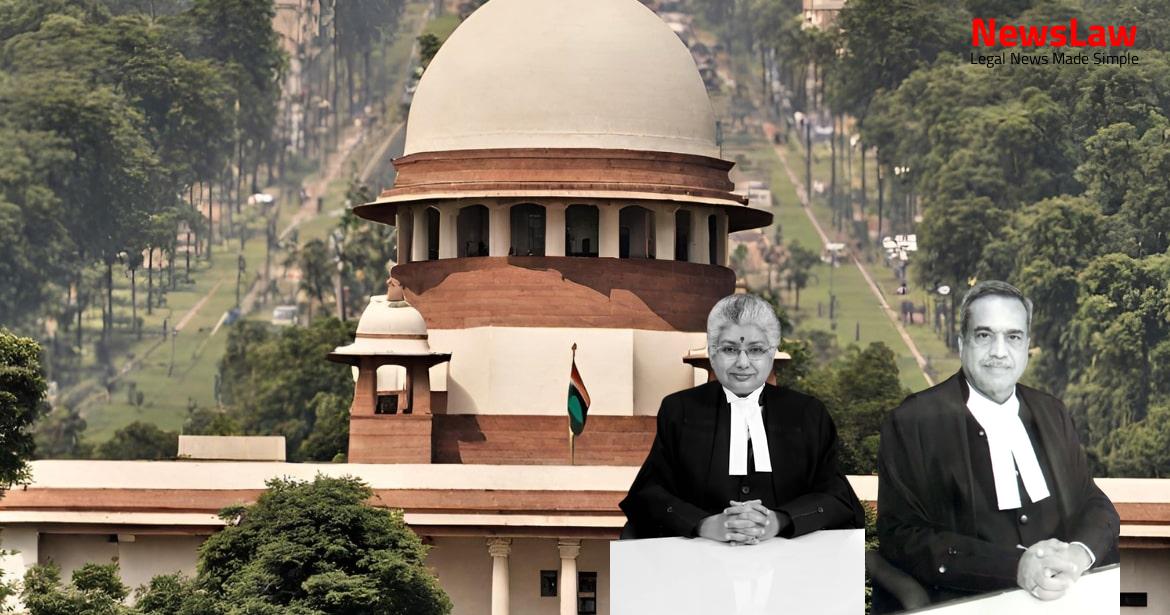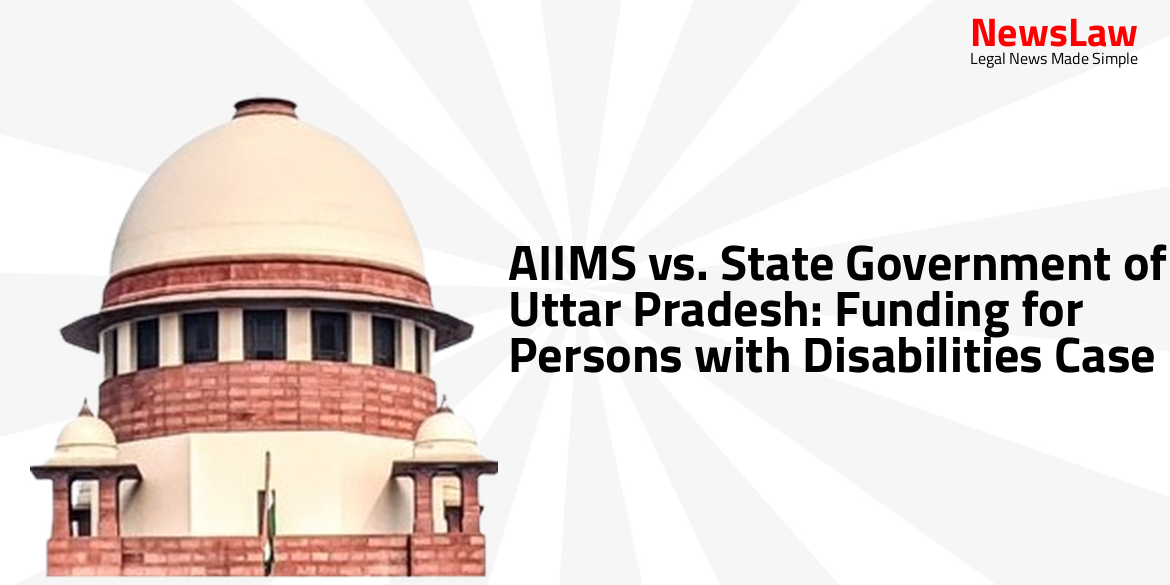In a significant legal battle over land alienation, the Supreme Court of India resolved the dispute between Tikaram and The Estate of Tikaram. The case delved into the complexities of Order II Rule 2, shedding light on its interpretation. Stay tuned for a detailed analysis!
Facts
- Tikaram sold a total of 8.22 acres of land to the appellants in two transactions in January and February 1959.
- Tikaram passed away in July 1959.
- The respondents filed a suit in 1969 to set aside the sale deed dated 21.01.1959.
- High Court remanded the matter to the First Appellate Court for a decision on merits.
- Respondents filed another suit in 1971 challenging the sale deed dated 11.02.1959.
- Allegations were made that Tikaram sold the land, claiming it to be joint family ancestral property, for immoral purposes and without necessity.
- Trial Court in 1969 dismissed the suit, declaring Tikaram as the rightful owner due to a partition in 1957.
- The Trial Court found that the suit was liable to be dismissed on the ground of Order II Rule 2 and constructive res judicata.
- The Appellate Court upheld the Trial Court’s decision on other points but dismissed the suit based on Order II Rule 2 and constructive res judicata.
- The High Court initially agreed with the Trial Court and the Appellate Court but later reversed their decision on the basis that Order II Rule 2 will not be a bar.
- This Court overturned the High Court’s view that the suit was barred by Order II Rule 2 and by the principles of constructive res judicata.
Also Read: Entitlement to Back Wages: Upholding Justice
Issue
- The first question to decide is the applicability of the bar under Order II Rule 2.
- The High Court’s decision that the bar under Order II Rule 2 does not apply in this case is being questioned.
- The issue revolves around whether the bar under Order II Rule 2 should be considered in the given circumstances.
- Determining the correct interpretation of Order II Rule 2 is crucial to resolving this question.
Also Read: Remand Order Upheld: Legal Analysis in The Case of The National Investigation Agency vs. The State
Arguments
- Article 109 of the Limitation Act, 1963 was brought up by the counsel for the appellants.
- They argued that the High Court’s conclusion on Order II Rule 2 was an error.
- Order II Rule 2 has been considered a bar in this case, citing previous judgments including Coffee Board v. Ramesh Exports Private Limited and A.B.C. Laminart Pvt. Ltd. & Anr. v. A.P. Agencies, Salem.
- Counsel for the respondents pointed to Order VII Rule 1, emphasizing the difference in cause of action between the suits.
- The period of limitation for the second alienation will expire only after 12 years from the date of possession taken by the alienee.
- The counsel cited the judgment in Alka Gupta v. Narender Gupta to support the argument.
- The period of limitation for the second sale deed is different from that of the first sale deed.
Also Read: Supreme Court Ruling on Recruitment Rules Challenge
Analysis
- The plaintiffs, governed by Mitakshara Law, filed two suits related to ancestral property alienation by their late father Tikaram who had wasteful habits.
- The cause of action in both suits must be identical, and relief claimed in subsequent suit could have been included in the earlier suit.
- Order II Rule 2 provides that every suit must include the whole claim a plaintiff is entitled to make in respect of the cause of action.
- The High Court reasoned on Order II Rule 3 and different periods of limitation to determine if causes of action were separate or identical.
- The High Court emphasized the requirement to comprehend all claims from a cause of action in one suit to prevent vexing the defendant multiple times.
- Order II Rule 2 CPC requires every suit to include the whole of the claim the plaintiff is entitled to make in respect of any particular cause of action.
- The plaintiff may choose to relinquish any part of their claim if they wish to do so.
- Order II Rule 2 CPC covers situations where a plaintiff omits to sue or intentionally relinquishes any portion of the claim they are entitled to make.
- If the plaintiff omits or relinquishes a part of the claim, they cannot sue for that part later on.
- The Court must examine the cause of action pleaded by the plaintiff in the relevant suits to determine if a suit is barred by Order II Rule 2.
- Constructive res judicata and Order II Rule 2 CPC serve different purposes – constructive res judicata deals with grounds of attack and defence that should have been raised, while Order II Rule 2 CPC is about reliefs that should have been claimed on the same cause of action but weren’t.
- The objective of Order II Rule 2 is to prevent the splitting up of claims and to avoid a multiplicity of suits.
- If a plaintiff omits to sue or intentionally relinquishes any part of his claim, he shall be barred from suing on that portion.
- Order II Rule 2(3) precludes the plaintiff from suing for any relief that is omitted or relinquished in respect of the same cause of action.
- A plaintiff is allowed to combine several causes of action in the same suit against the same defendant or defendants jointly.
- When causes of action are united, the court’s jurisdiction depends on the total value of the subject matters at the time of instituting the suit.
- A person entitled to multiple reliefs for the same cause of action may sue for all or any of them, but if they omit to sue for any relief without the court’s permission, they cannot later sue for that omitted relief.
- No person shall be vexed twice on the same cause of action
- Bar under Order II Rule 2 applies when plaintiffs omit to sue in respect of the same cause of action
- In this case, bar under Order II Rule 2 would apply as plaintiffs did not sue in respect of the sale deed in question
Decision
- The court does not find it necessary to make a decision on the matter of constructive res judicata.
- The appeal is allowed and the judgment of the High Court is set aside.
- Each party will bear their respective costs.
Case Title: PRAMOD KUMAR Vs. ZALAK SINGH .
Case Number: C.A. No.-001055-001055 / 2019



